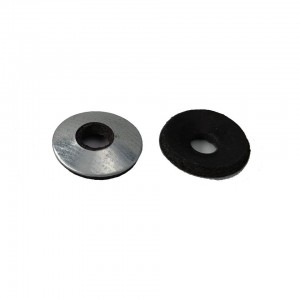A washer is a material or combination of materials clamped between two independent connectors (mainly flanges), whose function is to maintain a seal between the two connectors during the predetermined service life.The washer must be able to seal the joint surface and ensure that the sealing medium is impermeable and not corroded, and can withstand the effects of temperature and pressure.Washers generally consist of connectors (such as flanges), washers, and fasteners (such asboltsandnuts) . Therefore, when determining the sealing performance of a certain flange, the entire flange connection structure must be considered as a system. The normal operation or failure of the washer depends not only on the performance of the designed washer itself, but also on the stiffness and deformation of the system, the roughness and parallelism of the joint surface, and the size and uniformity of the fastening load.
Five Elements of Shim Selection:
1.temperature:
In addition to the maximum and minimum working temperatures that can be tolerated in the short term, the allowable continuous working temperature should also be considered. The washer material should be able to resist creep to reduce stress relaxation of the washer, in order to ensure its sealing under working conditions. Most washer materials will experience severe creep as the temperature increases. Therefore, an important indicator of washer quality is the creep relaxation performance of the washer at a certain temperature.
2.application:
It mainly refers to the information of the connection system where the washer is located, and the appropriate washer material and type need to be selected based on the material of the flange, the sealing surface type of the flange, the roughness of the flange, and bolt information. Non metallic flanges must choose gaskets with relatively low pre tightening force requirements, otherwise there may be situations where the gasket has not been compressed yet and the flange has been crushed during the flange tightening process.
3.medium:
The washer should be unaffected by the sealing medium throughout the working conditions, including high-temperature oxidation resistance, chemical corrosion resistance, solvent resistance, permeability resistance, etc. Obviously, the chemical corrosion resistance of the gasket material to the medium is the primary condition for selecting the washer.
4.pressure:
The washer must be able to withstand the maximum pressure, which may be the test pressure, which may be 1.25 to 1.5 times the normal working pressure. For non-metallic gaskets, their maximum pressure is also related to the maximum working temperature. Usually, the value of the highest temperature multiplied by the highest pressure (i.e. PxT value) has a limit value. Therefore, when selecting their maximum working pressure, it is also necessary to consider the maximum PxT value that the gasket can withstand.
5.size:
For most non-metallic sheet washers, thin washers also have a greater ability to resist stress relaxation. Due to the small area of contact between the inner side of the thin washer and the medium, the leakage along the washer body is also reduced, and in this case, the blowing force borne by the washer is also small, making it difficult for the washer to be blown out
Post time: Jul-17-2023


